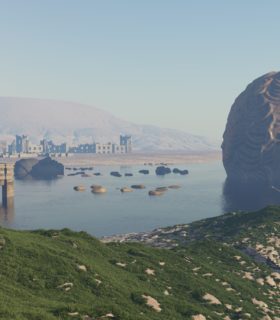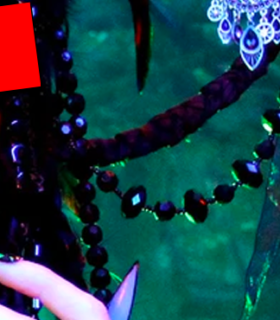In the nineteen-forties, two atomic monsters ravaged Japan. The uncreatively named, Fat Man and Little Boy turned two cities to ash in the incinerating light of a nuclear flame. Countless people had their shadows burned into walls, were turned into screaming monsters of carbon and embers, or blown apart. The land itself scarred with radiation and the body-horror of tumours and lingering mutations carried on for decades.
Some attribute the creation of kaiju—the Japanese tradition of giant monster films—to the Americans as well, The Beast from Twenty-Thousand Fathoms was called Genshi Kaijū ga Arawareru in Japan, but the first actual kaiju film is widely regarded as Gojira, known in the west as Godzilla.
This film emerged in nineteen fifty-four, not even ten years after Oppenheimer became ‘The Destroyer of Worlds’. With a one-two punch, a proud and defiant nation, one that had considered itself superior and untouchable had its entire character and outlook changed.
Cultures often deal with their shortcomings and pain through art, and Japan was no different. They channeled their hurt and destruction into strange, even comical forms. Godzilla took the form of a destroyer, a guardian, ‘the King of the Monsters’, and even a god.
All these forms reflected and caricatured Japan’s increasingly complicated relationship with America. Remixed, remodeled, mechanised, and joined by a pantheon of other gigantic beasts, Godzilla helped to create a whole pantheon of kaiju.
Japan remodeled itself after its conqueror, much as it had imitated the British during the age of colonialism. Atomic bombs became atomic monsters and Disney cartoons became anime. American technology was transistorised, miniaturised, improved and then bettered. American capitalism as a whole was adopted and exploited to the point where, in a scant three decades, American paranoiacs were predicting that Japanese economic power would colonise them.
Different countries have their visions of the apocalypse, an insight into their eschatological anxieties and national character.
The British describe the end of the world in cosy, pastoral visions. A return to the land and a simpler time, often at the threat of outside or natural menace. In Survivors it was a plague, in The Day of the Triffids it was blindness and the horrific by-product of Lysenkoism in the form of an all-devouring plant. Even The War of the Worlds shares a uniquely botanical British dread, by annihilating England’s green and pleasant land under a carpet of creeping red growth.
America had its own personalised versions of the apocalypse, and it was usually an end that was self-inflicted. Like the Japanese before their defeat, America was assured of its power and its unassailable strength. The only graspable way in which America could be brought low, or suffer a disaster was through its own hubris or inaction. A failure to be vigilant, or corruption from alien modes of thought against God, country, and patriotism.
Where Japan’s atomic monsters were reflections of what had been inflicted on them, America’s were the result of their home-grown experiments, or—rather quaintly for a modern nation—from superstition about ‘playing God’.
Romero’s zombies were a reflection of blind consumerism and a coy metaphor for ‘social disease’. The more modern zombies of The Walking Dead appeal to the American version of the British ‘cosy apocalypse’, only with constant conflict and violence, more in keeping with America’s frontier mentality and the mythopoetic individualism of the self-sufficient man.
The American apocalypse has been in transition. It is reflecting the loss of America’s confidence in itself and the decline of its Empire. September the eleventh gave America a taste of the indignities it had, up until that point, inflicted on others but never suffered itself. Generations of foul-play throughout The Cold War, toppling one government, raising another, backing dictators, orchestrating or turning a blind eye to horrors; all in the name of manifest destiny.
Just as they had thought, in their hubris, in the apocalyptic visions of the fifties, it was America that did this to itself. These were American chickens coming home to roost, jet-powered, terrorist-piloted chickens, but chickens nonetheless. It just felt like it was coming from outside. The American psyche had a hard time processing it, reflected in its fantastical media, and the re-emergence of the disaster-movie and the profligate spread of conspiracy theories. The idea of 9/11 being an ‘inside job’ made it into a directly self-inflicted wound, rather than a consequence of the American Empire’s past actions. That was more easily digestible to the American ego.
That was just how strong the fable of American exceptionalism and invulnerability was. Even those who believed their nation to be evil, could not countenance the idea that it could have had even a moment of genuine weakness.
Instead of the mushroom cloud, or the atomic fire, here was a new visual language. That of billowing toxic dust and bloodstained strangers, of tumbling bodies and blind shock, of the every day turned upside down. Here was a spectacle to match the shadows on the walls and the wasting radiation settling in the bones. All of it was shown in excruciating detail on twenty-four-hour rolling news, streamed to the internet and recorded for posterity from every angle.
This vision would be found again and again in American disaster media. The billowing smoke, the shaky-cam, and the giddily tumescent news anchors caught between horror and joy. Glad to be the ones to relate the destruction to the masses, horrified by what they were seeing.
“Oh, the humanity!”
If it was not the destruction itself, then it was the subversion of the every day, the palette of grey and brown—the subtly changed view in the aftermath, a new visual language of threat and devastation. We never see the disaster in The Road, but the film has the washed out, grey-brown pallor of the real horror, as well as being similarly incomprehensible and unexplained; at least in any satisfactory way.
Landmarks had been, comically, destroyed before. In Mars Attacks it was a punchline. Now it was a gut-punch. Now it could be taken seriously. It was only appropriate that, as with the terrors of the real world, the kaiju should arrive in America, though this was not for the first time. The original Godzilla movies were the preserve of hobbyists and nerds, with their stilted translations and virtually incomprehensible plots.
In 1998 there was an attempt to westernise Godzilla. It was a comically inept flop. It simply did not have the gravitas—despite being given a veneer of credibility—that even the rubber-suited Japanese movies had, due to their context. Three years later, the ground would be prepared by a real disaster.
2014’s version, part of the extended ‘Monsterverse’ (Godzilla, Kong: Skull Island, Godzilla: King of the Monsters and Godzilla Versus Kong) takes the whole thing even more seriously and, finally, in a post 9/11 America it lands with gravitas, seriousness and the full spectacle of disaster-porn. This version learned the meaning and power of allegorical monsters, and the audience—having finally digested the American disasters—was ready.
When Godzilla wades out of the sea to lay waste to San Francisco, it is a long-overdue homecoming, and reflective of a new national psyche—and hopefully, maturity.
James ‘Grim’ Desborough is the Video Guy at Trigger Warning and a rapidly ageing gothabilly. He is also an eminent atheist and libertine who spends his time writing, editing, and designing analogue games.


